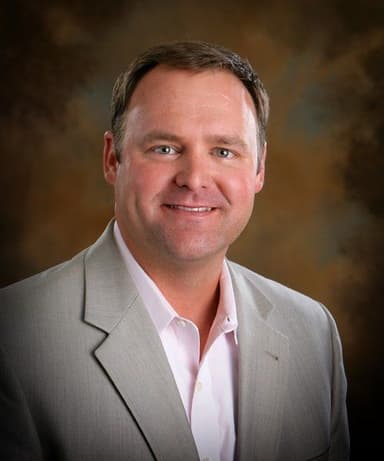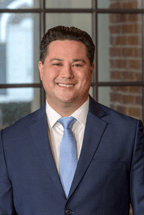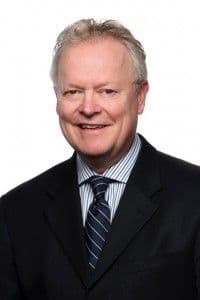


Sach Oliver · Matt Nakajima · Phillip Miller
Deep Dive Discussion: Arkansas Verdict against Old Dominion Trucking Company - Sach Oliver, Phillip Miller, Matt Nakajima
![]() September 21, 2022 ||TLU n Demand
September 21, 2022 ||TLU n Demand
Deep Dive Discussion: Arkansas Verdict against Old Dominion Trucking Company
Applying Jury Research from Beginning through Verdict; Using Visual Aids in Jury Selection, Opening, and Closing; and Using the Speed Trial Methodology in Direct and Cross Exams.
I. USE OF VISUAL AIDS IN JURY SELECTION AND OPENING STATEMENT
a. Visual Aids In Jury Selection:
We use a visual aid for almost every topic in jury selection. Often, we use a digital visual like PowerPoint.
Visuals in jury selection make the process go faster by helping the jurors understand the question and why we are asking it. Also, some jurors understand better by reading or seeing.
The defense will want to see the visual aids being used. So have a plan for that. You can set up a monitor on their table, give them printouts of the visuals, or show them your computer as you go.
b. USING VISUALS IN OPENING STATEMENT: Witness Examples: Andrew Bilisoly & Misty John
Digital, Boards, Butcher Pads, Examples, Timelines, Objects, and more. Do it all. The opening statement must come to life for a jury. It should be a show and tell story that is easy to understand. Don’t just say it, show it.
The key to visual aids in opening is preparation and testing. We teach that depositions are trial, and part of that strategy is most of our visual aids are complete by depositions. This method forces us to perfect and test our visuals well in advance of openings. Also, we can correct any issues before opening if we have a problem at depositions.
Next, we test our visuals in focus groups and jury simulations. We also preform dress rehearsals of the final product using all visuals.
II. TRIAL: DIRECT AND CROSS EXAMS UTILIZING THE SPEED TRIAL METHODOLOGY
The Speed Trial: Efficiently and Effectively Presenting the Story
Preparation
The only way to put on proof quickly in a speed trial is through extreme preparation. The speed trial is much more work than the old way of doing it.
2. Depositions are Trial
Speed Trials are only as effective as your deposition video clips. Its that simple. I have been teaching depositions are trial for years, its more true than ever with our trials by video. We must play short concise video clips of critical testimony that pops. I have a series of presentations on this topic and how to execute.
3. Jury Selection and Opening
The perfect speed trial has a multi-hour jury selection process to select a fair jury for both sides. That’s right – speed trial does not mean speed jury selection!!!!
The speed trial opening statement tells the complete story of the case and how the speed trial will work. It is NOT a 15 minutes opening statement. My last speed trial opening statement was 1. 5 hours.
In jury selection and openings lay the groundwork for the speed trial by explaining that you have spent months narrowing this case down to x number of witnesses and you started with 3 times that many. That you took 6 depositions that were over 4 hours each and narrowed them down to 20 minutes each or less. That you promise to keep each witness other than experts to under 20 minutes. Let the jury know you cannot control the defense lawyer’s time, but you will control your time.
Keep this promise, they will love you for it.
4. Direct Exams
Narrow it down to the essentials for the jury proof and minimums for legal proof. Use visual aids to simplify and let the witness tell a story or teach.
Be aggressive about time. For example:
If an expert is getting long winded, say “this is taking too much time, I need you to give us the bullet points and move faster.”
If there is a bunch of documents, say “do you trust the jury to hand these over to them and let them look at the documents in deliberations if they feel they need to? Tell me the 3 major takeaways from this pile of documents; not 4!”
Judge, I see we only have 30 minutes left for the day, if you let me call one more witness, I promise on my end, I will done before 5pm.
Be in your seat. Never late. Never forcing judge or jury to wait on you.
Re-Direct exams are seldomly needed. It must be catastrophic to get back up again.
5. Exhibits
At your fingertips. Organized to an extreme. We have the exact exhibits laid out in a notebook per witness. If we are using exhibit 1 with 4 witnesses, we will have 4 copies of exhibits 1, one copy with each witness’s questions/notebook. This way I am not ever looking for the exhibit.
With critical exhibits, make a notebook for each juror and hand out 12 copies (plus alternates) so each juror has its own critical exhibit. Of course, provide highlighters, sharpies, and pens.
You are the efficient source for exhibits and information.
6. Cross Exams
Shorter is better. Essential only. But how? When going through the process of narrowing down the testimony for cross exam, if we doubt or have a discussion of whether or not the piece of testimony should be included…that means it should not be. The simple fact that you and your team are discussing whether or not the testimony should be included means it is not essential. Basically, there are 3 blocks of testimony:
Essential -must have it
Grey Area – Probably don’t need it.
Obviously Don’t need it – cut it.
The speed trial is only the essential. After doing this process many times now, I have noticed a pattern of at least 3 reviews of each witness following the above bullet points to narrow it down to the essential trial testimony.
Re-cross exams – just don’t do it. If we can’t do it the first time, you can’t the second.
7. Shadow Jury
A shadow jury will help you decide throughout the case what is essential, grey area, and obviously don’t need. A shadow jury will help you discern parts of the case that you have won and don’t need to speed any more time on. We have a full presentation on how to effectively use and learn from a shadow jury.
8. Closing
Get it done. Argue. Short and to the point. At this point, you should be able to reference your anchors, your visual aids, and witnesses by name to make a point and not re-hash the evidence. Unlike jury selection and opening, try hard to make closing as short as possible while hitting all the essential points. I set a goal to make closing half the time of opening.
9. Set the Clock
We time each aspect of the trial. At our last trial, our lead expert testified for 15 minutes. Star fact witness was 4 minutes. Plaintiff was 13 minutes. And so on. You get the point.
If you can't attend Live, Watch On Demand